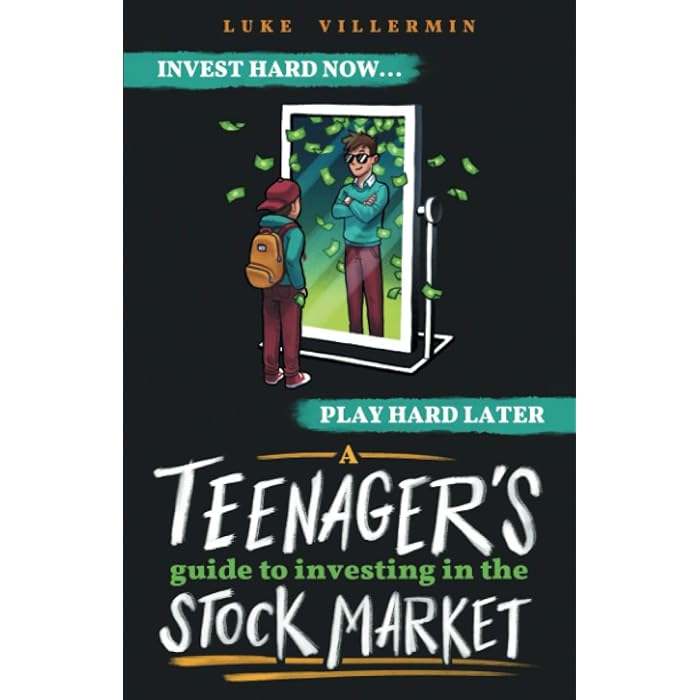Description
**A Teenager’s Guide to Investing in the Stock Market**
Investing in the stock market is a powerful way to grow your wealth, but it can also feel overwhelming, especially if you’re just starting out. As a teenager, you might have more time to let your investments grow, making it a great opportunity to build a solid financial future. Here’s a simple guide to help you get started with investing in the stock market.
### 1. **Understand What Stocks Are**
A stock represents ownership in a company. When you buy a stock, you’re buying a small piece of that company. The value of your stock rises or falls based on the company’s performance and other market factors. If the company grows and becomes more valuable, your stock increases in value, and you can sell it for a profit.
### 2. **Why Invest in Stocks?**
Investing in stocks has historically provided higher returns compared to other forms of saving, like keeping money in a savings account. Over time, the stock market tends to rise, though it’s not guaranteed, and there will be ups and downs. Investing early, especially as a teenager, gives you more time to recover from downturns and potentially see your money grow.
### 3. **Types of Investments**
– **Stocks:** Shares of individual companies. They can offer high returns but also come with higher risk.
– **ETFs (Exchange-Traded Funds):** A collection of stocks or bonds that you can buy as a single investment. They provide diversification, reducing risk.
– **Mutual Funds:** Similar to ETFs, these are collections of stocks or bonds but are typically managed by a professional fund manager.
– **Bonds:** Loans to companies or governments that pay interest over time. These are generally safer but offer lower returns.
### 4. **Setting Up an Investment Account**
To invest in the stock market, you need an account to buy and sell stocks. Here’s how you can get started:
– **Custodial Account:** Since you’re under 18, you’ll likely need a custodial account, which is set up by a parent or guardian for you.
– **Robo-Advisors:** Services like Betterment and Wealthfront offer simple investment platforms that manage your investments for you, often with lower fees.
– **Brokerage Accounts:** Many brokerage firms like Robinhood, E*TRADE, and Charles Schwab allow teens to open accounts with parental consent.
### 5. **Start Small with ETFs and Index Funds**
If you’re new to investing, buying individual stocks can be risky because their prices can fluctuate a lot. Instead, consider starting with **index funds** or **ETFs**. These are designed to track a specific market index, like the S&P 500, which represents 500 of the largest U.S. companies. These investments are less risky because they spread your money across many companies, reducing the chance that one bad investment will harm your overall portfolio.
### 6. **Learn to Read the Market**
Understanding the basics of the market will help you make more informed decisions. Some key terms to learn include:
– **Bull Market:** When the market is rising or is expected to rise.
– **Bear Market:** When the market is falling or is expected to fall.
– **Dividend:** A portion of a company’s earnings paid to shareholders, usually in cash or additional stock.
– **Volatility:** The degree of price fluctuation in the market or a specific stock.
### 7. **Do Your Research**
Before investing in any stock, do some research. Look at:
– The company’s **financial health**: Are they making money, or are they losing it?
– Their **growth potential**: Is the company expanding or stagnant?
– **News and trends**: What’s going on in the world and the economy? Are there any risks or opportunities that could affect your investment?
### 8. **Long-Term vs. Short-Term Investing**
As a teenager, you have the advantage of time. Consider thinking about long-term investing, which can help you weather market fluctuations. Long-term investing generally involves holding stocks for years or even decades, allowing your investments to grow.
– **Short-Term Investing:** This involves buying and selling stocks quickly to capitalize on short-term gains. This can be risky and requires constant attention to the market.
### 9. **The Power of Compounding**
When you invest, your money earns returns. Over time, you also earn returns on those returns, which is called **compounding**. The longer you let your investments grow, the more your money can work for you.
### 10. **Avoid Emotional Decisions**
The stock market can be volatile, and it’s easy to panic when prices fall. Resist the urge to sell your investments in a panic when the market dips. Often, the market recovers over time. Stick to your investment plan and avoid making impulsive decisions based on fear or excitement.
### 11. **Diversify Your Portfolio**
Don’t put all your money into one stock or type of investment. By diversifying, you can spread your risk across different types of assets, sectors, and companies. This reduces the chance of losing everything if one investment doesn’t perform well.
### 12. **Fees and Taxes**
Remember that investing comes with costs. Brokerage firms often charge fees for trading, though many platforms now offer commission-free trades. Additionally, you may need to pay taxes on any earnings, so it’s important to learn about tax implications for your investments.
### 13. **Stay Consistent and Patient**
Investing isn’t about getting rich quickly; it’s about being patient and consistent. Set aside money regularly to invest, even if it’s a small amount, and avoid trying to time the market. Over time, your investments will grow.
—
### **Key Takeaways**
– Start small and invest regularly.
– Focus on long-term growth, not short-term profits.
– Diversify your investments to reduce risk.
– Do your research and avoid emotional decisions.
– Take advantage of compounding and start as early as possible!





Reviews
There are no reviews yet.